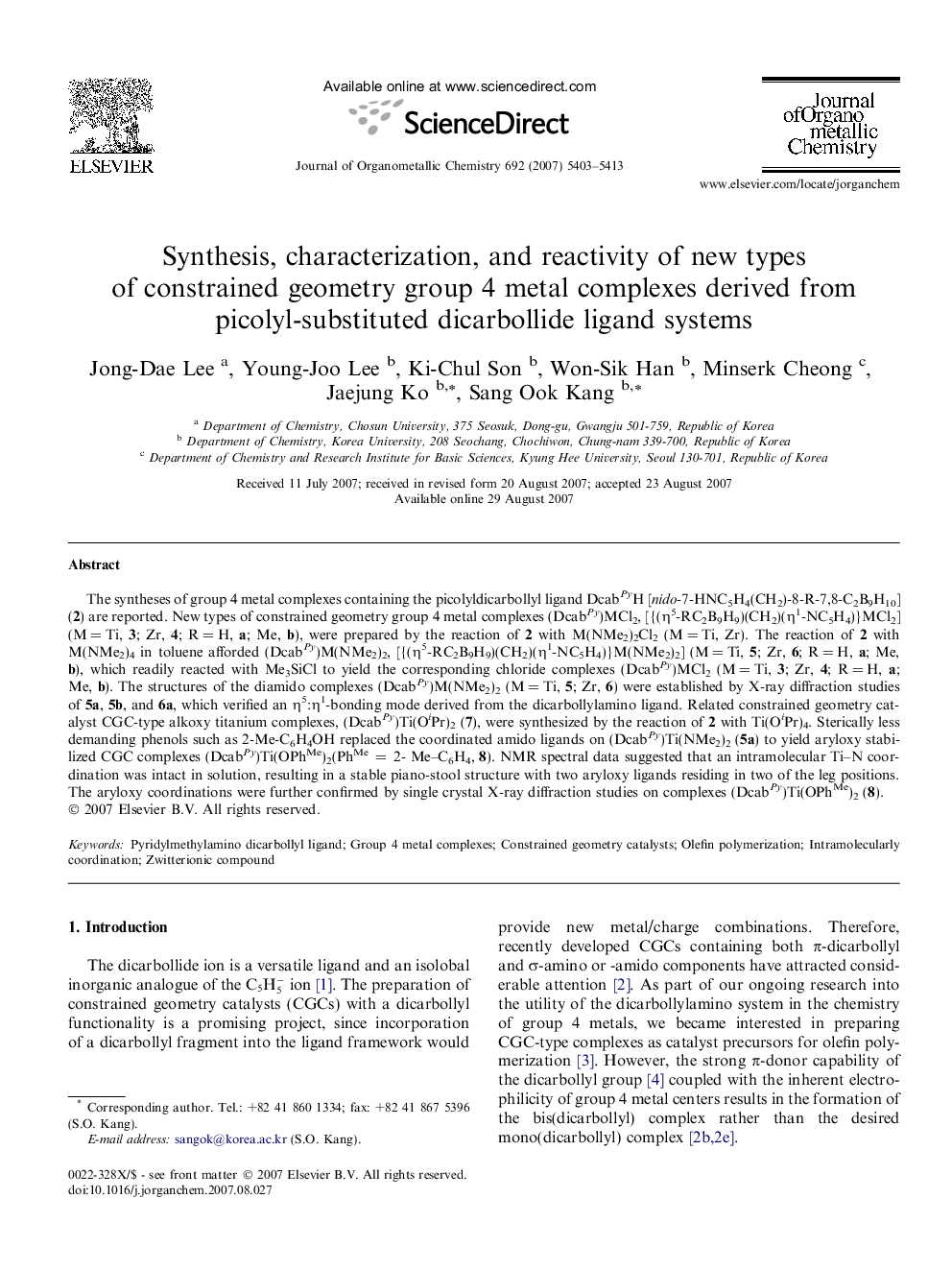| Article ID | Journal | Published Year | Pages | File Type |
|---|---|---|---|---|
| 1328130 | Journal of Organometallic Chemistry | 2007 | 11 Pages |
The syntheses of group 4 metal complexes containing the picolyldicarbollyl ligand DcabPyH [nido-7-HNC5H4(CH2)-8-R-7,8-C2B9H10] (2) are reported. New types of constrained geometry group 4 metal complexes (DcabPy)MCl2, [{(η5-RC2B9H9)(CH2)(η1-NC5H4)}MCl2] (M = Ti, 3; Zr, 4; R = H, a; Me, b), were prepared by the reaction of 2 with M(NMe2)2Cl2 (M = Ti, Zr). The reaction of 2 with M(NMe2)4 in toluene afforded (DcabPy)M(NMe2)2, [{(η5-RC2B9H9)(CH2)(η1-NC5H4)}M(NMe2)2] (M = Ti, 5; Zr, 6; R = H, a; Me, b), which readily reacted with Me3SiCl to yield the corresponding chloride complexes (DcabPy)MCl2 (M = Ti, 3; Zr, 4; R = H, a; Me, b). The structures of the diamido complexes (DcabPy)M(NMe2)2 (M = Ti, 5; Zr, 6) were established by X-ray diffraction studies of 5a, 5b, and 6a, which verified an η5:η1-bonding mode derived from the dicarbollylamino ligand. Related constrained geometry catalyst CGC-type alkoxy titanium complexes, (DcabPy)Ti(OiPr)2 (7), were synthesized by the reaction of 2 with Ti(OiPr)4. Sterically less demanding phenols such as 2-Me-C6H4OH replaced the coordinated amido ligands on (DcabPy)Ti(NMe2)2 (5a) to yield aryloxy stabilized CGC complexes (DcabPy)Ti(OPhMe)2(PhMe = 2- Me–C6H4, 8). NMR spectral data suggested that an intramolecular Ti–N coordination was intact in solution, resulting in a stable piano-stool structure with two aryloxy ligands residing in two of the leg positions. The aryloxy coordinations were further confirmed by single crystal X-ray diffraction studies on complexes (DcabPy)Ti(OPhMe)2 (8).
Graphical abstractA series of CGC-type group 4 metal complexes, (DcabPy)ML2 (M = Ti, Zr; L = Cl, NMe2, OiPr, OAr), were easily prepared by reaction of the 2-pyridylmethyldicarbollyl ligand with suitable group 4 metal reagents. Structural studies of the resulting complexes verified the formation of a CGC-type geometry with the typical η5;η1-type bonding interaction between the aminodicarbollyl ligand and the metal atom.Figure optionsDownload full-size imageDownload as PowerPoint slide
